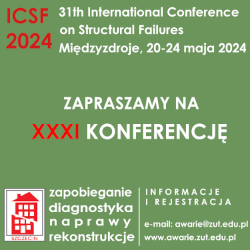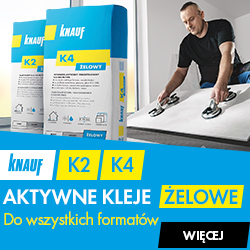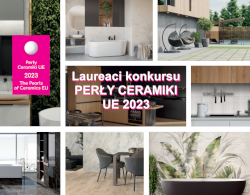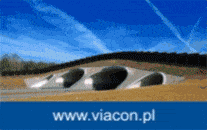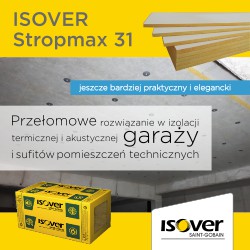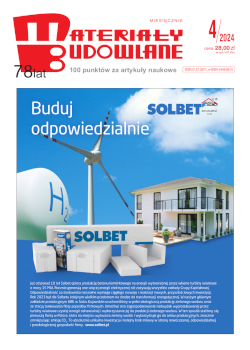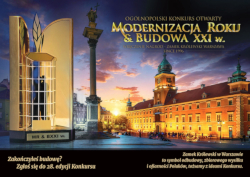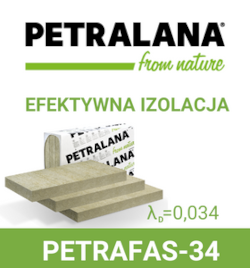mgr inż. Maria Teresa Małek Politechnika Poznańska, Wydział Budownictwa i Inżynierii Środowiska
prof. dr hab. inż. Halina Koczyk Politechnika Poznańska, Wydział Budownictwa i Inżynierii Środowiska
Autor do korespondencji e-mail : Ten adres pocztowy jest chroniony przed spamowaniem. Aby go zobaczyć, konieczne jest włączenie w przeglądarce obsługi JavaScript.
DOI: 10.15199/33.2016.07.27
W artykule przedstawiono typowe rozwiązania konstrukcyjne ścian zewnętrznych stosowane w budownictwie energooszczędnym pod kątem utrzymania komfortu cieplnego i poprawy efektywności energetycznej.Wprzeglądzie literatury skoncentrowano się na rozwiązaniach wykorzystujących odnawialne źródła energii oraz zwiększających pojemność cieplną przegród. Zaprezentowano pasywne oraz aktywne ściany słoneczne. Opisano należące do pierwszej grupy: ścianę Trombe'a i jej modyfikacje oraz ścianę wodną, natomiast w przypadku drugiej grupy: barierę termiczną, ścianę zawierającą materiał zmiennofazowy oraz ścianę z rurkami ciepła. Podstawowym zadaniem porównywanych rozwiązań jest ograniczenie chwilowych zysków słonecznych i wykorzystanie ich na cele grzewcze w czasie zwiększonego zapotrzebowania. Dodatkowo zawarto krótki opis komfortu cieplnegowraz z przytoczeniemnajważniejszych aktów prawnych i wytycznych.
Słowa kluczowe: budownictwo energooszczędne, komfort cieplny, pasywne systemy słoneczne, aktywne systemy słoneczne, ściana Trombe'a.
* * *
The construction’s solutions in the building but thermal comfort
The article presents the typical construction’s solutions external walls used for energy-efficient building construction in terms of maintaining the thermal comfort and improving energy efficiency. The literature review focused on the solutions which use the renewable energy and increase the heat capacitywalls. The passive and active solar energy systems are presented. The Trombe’swall and itsmodification andwater thermal storagewall are included in the first category, the second section contains the thermal barrier, the wall with phase change material and the wall implanted with heat pipes. The main conclusion is the limitation of the solar heat gains and the usage themin the time of increasing heating demand. In addition, it was included a short description of thermal comfort and was referred to the most important standards and guidelines.
Keywords: energy-efficient building construction, thermal comfort, passive solar energy systems, active solar energy systems, Trombe’s wall.
Literatura
[1] Bainbridge David, Ken Haggard. 2013. Passive Solar Architecture: Heating, Cooling, Ventilation, Daylighting and More Using Natural Flows. Chelsea Green Publishing Company.
[2] Dyrektywa Parlamentu Europejskiego i Rady 2010/31/UE z 19 maja 2010 r. w sprawie charakterystyki energetycznej budynków (wersja przekształcona).
[3] EN 15251-2007 Indoor environment input parameters for design and assessment of energy performance of buildings addressing indoor air quality, thermal environment, lighting and acoustics.
[4] http://btandsons. hu/ dostęp 1.12.2015.
[5] http://isoactive-3d. hu/ dostęp 1.12.2015.
[6] http://www. isomax. com. pl/ dostęp 1.12.2015.
[7] Ismail K. A. R., J. N. C. Castro. 1997. „PCM thermal insulation in buildings”. International Journal of Energy Research 21 (14): 1281 – 1296.
[8] ISO 7730-2005 Ergonomics of the thermal environment –Analytical determination and interpretation of thermal comfort using calculation of the PMVand PPD indices and local thermal comfort criteria.
[9] Ji Jie, et al. 2009. „An improved approach for the application of Trombe wall system to building construction with selective thermo-insulation façades”. Chinese Science Bulletin 54 (11): 1949 – 1956. DOI: 10.1007/s11434-009-0353-6.
[10] Ji Jie, et al. 2007. „Modeling of a novel Trombe wall with PV cells”. Building and Environment 42 (3): 1544 – 1552. DOI: 10.1016/j.buildenv. 2006.01.005.
[11] Khalifa Abdul Jabbar N., Ehsan F. Abbas. 2009. „A comparative performance study of some thermal storagematerials used for solar space heating”. Energy and Buildings 41 (4): 407 – 415. DOI: 10.1016/j. enbuild. 2008.11.005.
[12] Koczyk Halina, Bronisława Antoniewicz, Małgorzata Basińska, Andrzej Górka, Radomira Makowska-Hess. 2009. Ogrzewnictwo praktyczne projektowanie, montaż, certyfikacja energetyczna, eksploatacja. Poznań. Systherm Serwis.
[13] Krzaczek M., Z. Kowalczuk. 2011. „Thermal Barrier as a technique of indirect heating and cooling for residential buildings”. Energy and Buildings 43 (4): 823 – 837. DOI: 10.1016/j.enbuild. 2010.12.002.
[14] Kuznik Frédéric, Damien David, Kevyn Johannes, Jean-Jacques Roux. 2011. „A review on phase change materials integrated in building walls”. Renewable and Sustainable Energy Reviews 15 (1): 379 – 391.DOI: 10.1016/j.rser.2010.08.019.
[15] Leciej-Pirczewska Dorota. 2015. „Przykłady rozwiązań konstrukcji budynkówwaspekcieOZE. Przegroda zewnętrzna z barierą termiczną”.Budownictwo energooszczędne w Polsce – stan i perspektywy: 205 – 216.
[16] Lu Yuehong, Shengwei Wang, Kui Shan K. 2015. „Design optimization and optimal control of grid-connected and standalone nearly/net zero energy buildings”. Applied Energy 155: 463 – 477. DOI: 10.1016/j.apenergy.2015.06.007.
[17] Navarro Lidia, Alvaro de Garcia, Dervilla Niall, Albert Castell, Maria Browne, Sarah J. McCormack, Philip Griffiths, Luisa F. Cabeza. 2016. „Thermal energy storage in building integrated thermal systems:Areview. Part 2. Integration as passive system”. Renewable Energy 85: 1334 – 1356. DOI: 10.1016/j.renene.2015.06.064.
[18] Rupp Ricardo Forgiarini, Natalia Giraldo Vásquez, Roberto Lamberts. 2015. „A review of human thermal comfort in the built environment”. Energy and Buildings 105: 178 – 205. DOI: 10.1016/j.enbuild.2015.07.047.
[19] Saadation Omidreza, K. Sopian, C. H. Lim, et al. 2012. „Tromb walls: A review of opportunities and challenges in research and development”. Renewable and Suitable Energy Reviews 16 (8): 6340 – 6351. DOI: 10.1016/i. rser.2012.06.032.
[20] Sadineni Suresh B., Srikanth Madala, Robert F. Boehm. 2011. „Passive building energy savings: A review of building envelope components”. Renewable and Sustainable Energy Reviews 15 (8): 3617 – 3631. DOI: 10.1016/j. rser.2011.07.014.
[21] Stojanović Branislav V., Jelena N. Janevski, Petar B.Mitković,Milica B. Stojanović,MarkoG. Ignjatović. 2014. „Thermally activated building systems in context of increasing building energy efficiency”. Thermal Science 18 (3): 1011 – 1018. DOI: 10.2298/TSCI1403011S.
[22] Sun Wei, Jie Ji, Chenglong Luo, Wei He. 2011. „Performance of PV-Trombe wall in winter correlated with south façade design”. Applied Energy 88 (1): 224 – 231. DOI: 10.1016/j.apenergy. 2010.06.002.
[23] Tyagi Vineet Veer, D. Buddhi. 2007. „PCM thermal storage in buildings: A state of art”. Renewable and Sustainable Energy Reviews 11 (6): 1146 – 1166. DOI: 10.1016/j.rser.2005.10.002.
[24] Wang Weiliang, Zhe Tian, Yan Ding. 2013. „Investigation on the influencing factors of energy consumption and thermal comfort for a passive solar house with water thermal storage wall”. Energy and Buildings 64: 218 – 223. DOI: 10.1016/j.enbuild.2013.05.007.
[25] Wu Ting, Chengwang Lei. 2016. „Areviewof research and development on water wall for building applications”. Energy and Buildings 112: 198 – 208. DOI: 10.1016/jenbuild.2015.12.003.
[26] Zhang Zhigang, Zhijian Sun, Caixia Duan. 2014. „Anew type of passive solar energy utilization technology – The wall implanted with heat pipes”. Energy and Buildings 84: 111 – 116. DOI: 10.1016/j.enbuild.2014.08.016.
Otrzymano: 22.06.2016 r.
Materiały Budowlane 07/2016, str. 83-86 (spis treści >>)










